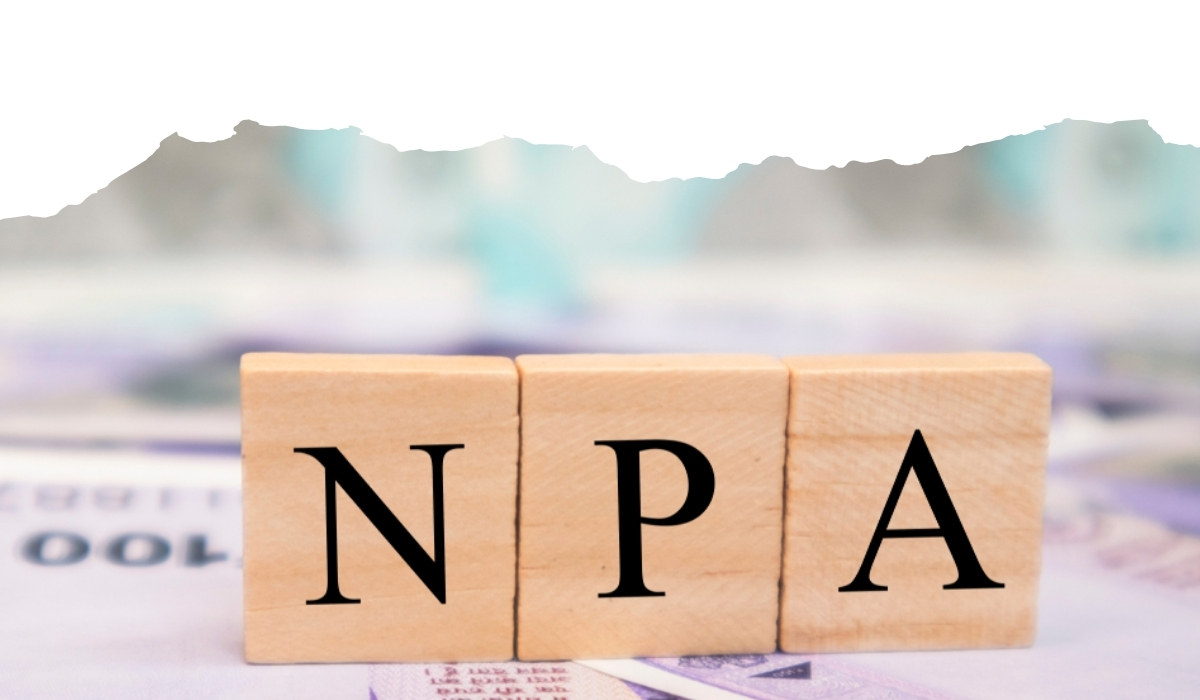Non-Performing Assets, popularly known as NPAs are a crucial economic indicator used to evaluate the health and resilience of banks and other financial institutions in finance. It is an important parameter for banks because NPAs directly weigh down on how the banks deal with risk and maintain financial muscle.
What is a Non-Performing Asset?
Take for example you lend a friend some money and expect it to be returned after certain days with extra cash (interest). While we are at this, if your friend takes forever to pay you back or simply stops paying up one day then congratulations because that loan is now an NPA Basically, it is the money that has not been repaid by a borrower on time – this creates worries for lenders.
Importance of NPAs in the Financial Sector
Banks treat NPAs as symptoms. They suggest some borrowers are struggling to pay back their loans, impacting the bank’s bottom line and overall health. The banks also need to constantly monitor and manage their NPAs, as at the end of the day if these are not handled properly then even an international borrower or a large corporate entity can land in financial trouble.
- Risk Assessment: As we earlier learned if any of the banks have NPA then it gives the sign for credit risk. This suggests loan default or problems in the creditworthiness and management of borrowers.
- Fiscal Health: Monitoring NPAs helps in determining the long-run fiscal health of financing institutions. Large NPAs are an indication of financial stress or inefficiency in the way loans were given out.
- Profitability: High NPAs lead to high provisioning costs for banks which affects their interest income as well.
- Regulatory Compliance: NPAs are utilised by regulators as a tool for measuring your financial soundness and risk management. Banks must adhere to the NPA reporting and provisioning-related regulations.
- Investor Confidence: A Bank having an NPA will always be more trustworthy in the eyes of investors as a low level turns out to indicate improved stability and better management techniques adopted by these banks. If the NPA is high, investors may be alarmed and this might lead to a fall in company values.
How Do Non-Performing Assets Work?
Mechanism and Lifecycle of NPAs:
- Missed Payments: NPAs start when borrowers miss their loan payments for a significant period, typically around 90 days. This indicates they might have trouble repaying the loan.
- Bank’s Efforts: Initially, banks try to help borrowers catch up on their payments through reminders and negotiations. They might offer restructuring of loans to make repayments easier.
- Classification as NPA: If the borrower consistently fails to make payments despite these efforts, the loan is classified as a Non-Performing Asset (NPA). This means it’s unlikely to be fully repaid as per the original terms.
- Recovery Actions: To recover their money, banks might seize and sell the assets that the borrower used as security for the loan. This is a way for banks to minimise their losses.
Factors Leading to NPAs
- Economic Challenges: During economic downturns, businesses may need help to generate enough income to repay loans. This increases the likelihood of loans turning into NPAs.
- Job Losses: Individuals losing their jobs can lead to difficulties in loan repayments, especially if they don’t find new employment quickly.
- Poor Financial Decisions: Borrowers may make risky financial decisions or overextend themselves, making it hard for them to keep up with loan repayments.
Let us consider the following scenario: someone obtains a loan by providing false information or by falsifying any documentation, including their job status or pay. It may go smoothly for a while, but the bank discovers fraud when the borrower cannot pay back the loan or fails to return it. The borrower never meant to pay it back, which results in a loss of money for the bank and makes it an NPA.
In many situations, the assets pledged as security are either nonexistent or of no value, making it difficult for the banks to retrieve the entire loan amount. This emphasizes how crucial it is for banks to do extensive due diligence and verification before authorising loans to stop these fraudulent actions and reduce NPAs.
How to Calculate Gross Non-Performing Assets Ratio and Net Non-Performing Assets
Formulas for calculating GNPA and NNPA
● Gross Non-Performing Assets (GNPA):
GNPA represents the total amount of loans that are classified as non-performing.
The formula for GNPA:
Where:
-
- Total Gross NPA = Sum of all loans that are classified as non-performing assets (NPA).
- Total Gross Advances = Total loans disbursed by the bank.
The GNPA is usually expressed as a percentage.
● Net Non-Performing Assets (NNPA):
NNPA takes into account provisions made by the bank against the potential losses due to non-performing assets. It gives a more conservative measure of the bank’s asset quality.
The formula for NNPA:
Where:
-
- Net NPA = Gross NPA – Provisions.
- Net Advances = Gross Advances – Specific Provisions.
Specific provisions are set aside by the bank to cover potential losses from bad loans.
The NNPA is also expressed as a percentage.
Types of Non-Performing Assets (NPA)
Substandard, Doubtful, and Loss Assets
-
- Substandard Assets: Substandard Assets are those loans which have a high risk of not being repaid.
- Doubtful Assets: These Doubtful Assets are more uncertain whether they will be paid back or not.
- Loss Assets: Banks have the prior idea that they won’t get all their money back from these loans.
NPA Provisioning
Setting Money Aside for NPAs
Banks put money aside, or make provisions, to offset possible NPA losses. Banks must comply with regulations to maintain the stability and transparency of the financial system.
GNPA and NNPA
How They Help Assess Bank Performance
-
- Gross NPA (GNPA): Shows how much of a bank’s loans are at risk.
- Net NPA (NNPA): Gives a clearer picture after accounting for losses.
NPA Ratios
Their Role in Financial Analysis
These ratios help analysts and regulators see how risky a bank’s loans are and how well it’s managing those risks.
Example of an NPA
Consider, that to grow his bakery, Ritik, a small company owner, borrowed money from a nearby bank. Everything was going smoothly at first, and he was making his loan instalments on time each month. However, Ritik found it difficult to make his loan payments as a result of an unanticipated economic slowdown and a decline in sales. Ritik eventually started to miss payments, and even though the bank tried to arrange a repayment schedule, things didn’t get any better.
In this case:
- When Ritik was making regular payments, the loan was performing well.
- But, as soon as he began to make payments because of financial hardships brought on by the recession, the loan was labelled as a Non-Performing Asset (NPA). The borrower’s inability to satisfy repayment commitments means that, from the bank’s point of view, this non-performing asset (NPA) is no longer producing the anticipated income (principal and interest repayments).
- Non-performing assets can result from several events, including company collapses, individual financial difficulties, recessions, or even shifts in governmental regulations that impact borrowers’ capacity to repay loans. Effective NPA management is essential for banks and other financial institutions to preserve their profitability and financial stability.
Impact of Non-Performing Assets on Operations
How NPAs Affect Banks and the Economy
Huge Non-Performing Assets in Banks create heavy losses to banks rather than profitability. Sometimes it is difficult for the banks to extend loans to another borrower. Because it all depends on the loans for the consumer and the business to make investments and spend money, this could slow down economic growth.
Conclusions:
Non-performing Assets (NPAs) indicate the bank’s financial health. At the time of repayment borrowers are fail to repay these loans become NPAs, which increases the risk and affects the bank’s profitability.
-
- Risk: Increased credit risk if NPAs are high.
- Fiscal Health: Checking NPAs helps in long-term stability.
- Profitability: NPAs increase costs and reduce income.
- Investor Confidence: If NPAs are low this indicates the stability of bank and attracts investors.
NPAs increase due to the failure to repay, economic challenges, and poor financial decisions. Calculating Gross NPA (GNPA) and Net NPA (NNPA) ratios helps cover their potential loans.
Effective NPA management is crucial for maintaining financial health, regulatory compliance, and investor confidence, contributing to overall economic stability.




